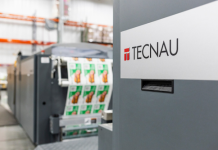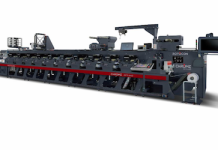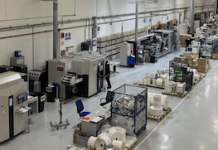Laurel Brunner of the Verdigris Project writes that labels and packaging produce phenomenal quantities of waste. Commercial print is also responsible for sending tonnes of paper for landfill or incineration. The signage business also produces a lot of material that once it is used, is mostly not reused and so it turns into trash.
If we wanted to point a finger at the worst offenders when it comes to environmental inefficiency, which print sector would we choose? However in all of these cases there are mechanisms for recycling or reuse and support for the circular economy, at least in principle. Users of the prints, including consumers, have options for sending material for recycling.
But book publishers can rightly claim the worst offender crown, because pulping of unsold books is built into their business models. And they do not have a habit of accurately estimating print volumes. It’s as if no one has noticed that the price per copy afforded by scale is counter to an environmentally responsible process. The thinking appears to be that because per copy prices get cheaper the more you print, it is OK to not take a more careful approach to estimating.
Even if authors want to claim their unsold copies in order to give them to schools, libraries, charities and second-hand shops, they cannot unless they buy the copies outright. There is no mechanism through which publishers, large and small, support reuse and redistribution. From the very large such as Penguin Random House through to the minnows such as Unbound, authors who want to take responsibility for the reuse of their books are forbidden from doing so unless they buy the copies themselves.
Book publishers are in the game to make money, just as pretty much every other print buyer is. It’s understandable that unwanted volumes should be turned into a revenue stream whenever possible. But this outmoded model has to change. There are two obvious flaws in this business model in the context of today’s production technology options. Not least of these is the reluctance to upgrade book production, ordering and distribution to a print on demand model. That takes money of course, but book publishing is highly profitable for the majors who are best place to drive change. And there doesn’t even seem to be a move towards hybrid production, whereby both conventional analogue and production on demand via digital printing are supported. It is a disgrace.
What the majors and the minors should be doing is investing in their knowledge of what is possible with print on demand. Working with networks of print service providers would allow publishers to produce books close to their point of use, either end users or the local bookshops. Using variable data technologies, they could even add value through personalisation or alternative endings say, or long and short versions. It seems so obvious. It is tragic that developers have created so many amazing opportunities for new book publishing and reuse models that are ignored. In other print sectors such as labels and packaging, signage and commercial print, innovators are exploiting digital on demand production and delivery. Book publishers meanwhile stick with what they know and what they can exploit, environmental impact or not.
This article was produced by the Verdigris Project, an industry initiative intended to raise awareness of print’s positive environmental impact. Verdigris is supported by: FESPA (www.fespa.com), Fujifilm (www.fujifilm.com/sustainability/), HP (www.hp.com), Kodak (www.Kodak.com/go/sustainability), Practical Publishing (www.practicalpublishing.co.za), Miraclon (https://miraclon.com), Unity Publishing (http://unity-publishing.co.uk) and Xeikon (www.xeikon.com).
THE VERDIGRIS PROJECT
http://verdigrisproject.com/





















